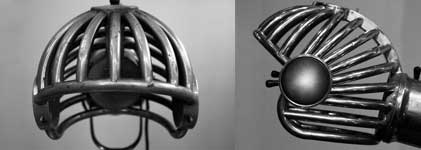This week, customizing a wireless controller for your Xbox One, finding Bluetooth in your smart television, and a sneak peek at what innovations are coming to TVs this year.
Using Bluetooth with your “smart” TV
Last week, Shane Foxman wondered why smart televisions aren’t using Bluetooth. I promised to dig into the question, and this week, I have answers for him.
In fact, some smart TVs, including LG and Samsung, do have Bluetooth functionality.
Some Samsung Smart TVs have Bluetooth connectivity disabled on some models, for some odd reason. But clever device hackers have found ways to access the secret on-screen menu to enable the Bluetooth connectivity.
You can also get Bluetooth adapters that plug into your TV’s USB port.
And Apple’s new AppleTV has Bluetooth built-in, so you can connect keyboards and game controllers with ease.
The reason Bluetooth hasn’t become ubiquitous in TVs is cost. Bluetooth controllers cost more than infrared. But the cost of Bluetooth controllers has dropped significantly, which is why we’re seeing more of them in our devices.
What to expect from new TVs hitting the market
In May, Samsung representatives were in Vancouver to show top sales reps what’s coming from the company’s line of televisions this year, and they invited media to come out for a preview.
This year is a big push for 4K video, or “ultra high-definition” (UHD), explained company representatives. What that refers to is 4,000 pixels of horizontal resolution, which is about four times the resolution of existing high-definition video.
But while the best Samsung TVs (the company uses the acronym “SUHD” for its top line) display 4K video, what the company has been focused on is something that reps suggested hasn’t really changed since it was introduced in the 1950s: colour.
Samsung is introducing the DCI-P3 colour gamut to its TVs, which is what movie theatres use. If your TV uses that expanded colour space, watching films at home will look more like they were intended.
Showing more colour requires more light, but increasing the brightness of a TV overall will end up with night images looking like they were taken in the day.
Enter HDR. High dynamic range technology means that TVs can show darker blacks, brighter brights, and more contrast between the two.
Samsung has also improved its smart TV experience, and have redesigned remote controls and on-screen interfaces.
And enabled Bluetooth means you can connect your headsets and keyboard and other input devices, such as game controllers.
Available models include
- KS8500 curved-screen series: 49-inch is $3,000, 55-inch is $3,400, 65-inch is $4,700
- KS9000 flat-screen series: 55-inch is $4,000, 65-inch is $5,200, 75-inch is $10.000
- KS9500 curved-screen series: 55-inch is $4,200, 65-inch is $5,500, 78-inch is $13,000
LG, meanwhile, is finally bringing its flat OLED screens to Canada.
OLED, for “organic light-emitting diode,” is a technology that doesn’t require a light source. The pixels in the display actually turn on and off, which is how OLED screens are able to display perfect blacks. It’s also how OLED screens are able to be as thin as they are.
LG’s OLED TVs are all equipped with UHD (4K) and HDR functionality.
The flat OLEDs from LG come in three models:
- B6 is the base model: 55-inch is $4,000, 65-inch is $7,000
- E6 adds 3-D functionality: 55-inch is $5,000, 65-inch is $8,000
- G6 has 3-D and premium speakers: 65-inch is $11,000
These are premium prices, for a premium experience.
Create your own Xbox Wireless Controller at the Xbox Design Lab
If you’ve ever wanted a new controller for your console, you’ve been limited to what the hardware and periperhal manufacturers have been making. There are always basic controllers, produced for the masses, as well as franchise-branded versions that are often limited-time promotions.
But now you can personalize your wireless controller for your Xbox One with the Xbox Design Lab.
Really all you’re doing is choosing colour configurations, but Microsoft says there are more than 8 million combinations possible.
There are seven steps to designing your own controller, and they involve selecting the colours of different panels on the controller.
There are 15 colours to choose from for the controller body, back, and the bumpers, triggers, and D-pad.
The thumbsticks can be one of eight colours.
And the controller you’re customizing is the redesigned Xbox Wireless Controller that will be shipping with the new Xbox One S this August. It has a built-in headset jack (so no add-on required for you to use any gaming headset with your Xbox One) and you can remap the button confgurations.
The mass-produced version of the new controller will cost Cdn$80. For an extra $20 you can design your own; a 16-characgter engraving is an additional $15.
Current Xbox One wireless controllers range between $65 and $80. The fully configurable Xbox Elite wireless controller is $180.
I was given an opportunity to try out the Xbox Design Lab. My first inclination was to create one with the blue and yellow colours of Fallout’s Pip Boy.
I almost created one that was ghost white, with no colour and just a bit of grey.
But the opportunity to mix and match so many different vibrant colours was too much to pass up. The one I settled on, after spending far too much time playing around with combinations, was a mix of Photon Blue, Oxide Red, and Electric Green.
Orders made now will begin shipping in early September, when the Xbox One S and new Xbox Wireless Controller are released.


Comments
Commenting is closed for this article.